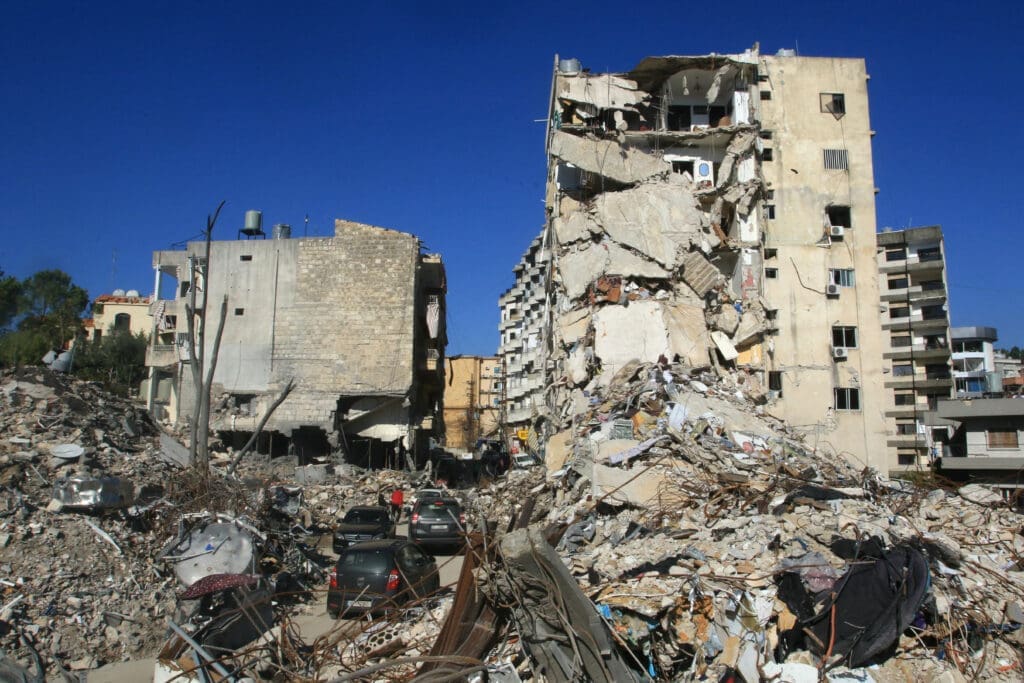After more than a year of hostilities that intensified dramatically in recent months, Hezbollah and Israel have agreed to a ceasefire, but the fragile agreement has already been tested by reported violations. In this interview with Afkār, Saoud El Mawla, visiting senior fellow at the ME Council, examines the deal’s significance and durability, as well as its implications for Lebanon and the wider region.
Afkār: What changed in the calculus of both parties to reach this point, and how realistic are the deal’s chances for full implementation and long-term success?
Saoud El Mawla: Three main factors have made this possible: exhaustion on both sides; the inability for either to achieve a decisive victory; and mounting external pressure.
Inside Israel, the heavy burden on the country’s reserve forces and economy was taking a toll, reflected in the decline of its credit rating. Leaked reports were appearing in the press about empty warehouses and a shortage of ammunition. This was compounded by the suspension of some arms shipments from the United States. Israel’s military also started taking heavier losses, especially in elite combat units such as the Golani Brigade. This aggravated the state of panic and sparked further displacement from Israel’s north, as well as from major cities, such as Tel Aviv, Haifa, Nahariya and Kiryat Shmona. It also led to fears of a long war of attrition that could bog down the army in a Lebanese quagmire as winter approaches. Israel’s domestic contradictions and pressure by the families of hostages and detainees also intensified, as did the discontent within the army and intelligence services against Netanyahu’s policies, especially after the dismissal of Defense Minister Yoav Gallant.
On the Lebanese side, Israel’s savage military conduct—including indiscriminate bombing of Beirut’s suburbs, cities in the south and Bekaa valley, northern villages, Palestinian refugee camps, and the total destruction of villages near the Israeli border—created strong pressure from the Lebanese public for Hezbollah to sign an agreement.
Secondly, despite securing some war aims through the ceasefire agreement, Netanyahu was unable to deliver the major victory over Hezbollah he had promised his public. Although Israel was able to kill much of the organization’s top leadership, Hezbollah’s demise was very much an illusion.
Finally, there was the combined pressure from Iran and the U.S. for a ceasefire. For its part, Tehran felt compelled to bring an end to the fighting to avert a looming Israeli or American attack against Iran. Washington was sensing growing discontent among its Arab and Muslim allies in the region, reflected in the recent Arab-Islamic Summit in Riyadh, Qatar’s withdrawal from mediation over the conflict in Gaza, and statements from the Saudi leadership disavowing normalization with Israel without a Palestinian state. Along with warrants issued by the International Criminal Court for the Israeli leadership, this could have provided the ceasefire talks with a sense of urgency.
ā: What do Israel and Hezbollah each gain from the agreement?
SE: For Israel, the agreement achieves longstanding aims against Hezbollah, including pushing the organization’s military infrastructure north of the Litani River, while allowing Israeli citizens to return to their homes in the north. The deal also gives Israel the “freedom of movement to implement the agreement by force,” and establishes an international monitoring system led by the U.S., in blatant violation of Lebanon’s sovereignty.
Crucially, the agreement severs the connection between the fighting in Gaza and Lebanon that Hezbollah and Iran sought to establish. This allows Netanyahu to refocus on eliminating resistance in Gaza, secure an end to the fighting on Israel’s terms, and prepare for a campaign against Iran, which Netanyahu has already begun working on with U.S. President-elect Donald Trump.
From Hezbollah’s perspective, the agreement guarantees the movement’s survival, as the wording and timing of the deal do not meet all of Israel’s demands. Israel had wanted to achieve a crushing victory over the Lebanese movement and to fundamentally alter the military, security and political situation in Lebanon, which did not happen.
Furthermore, the agreement remains within the framework of UN Security Council resolution 1701, which brought an end to war with Israel in July 2006. In practice, the implementation of any agreement will be subject to the balance of political power, both domestically and internationally, while Hezbollah will remain determined to repeat the experience of 2006, when it was able to remain in the south and rebuild stronger than before.
There are also parts of the agreement that remain incomplete, especially the details of plans for deploying the Lebanese army and for the withdrawal of Israeli forces. Despite Israel’s tough talk—backed up by Washington—about the need for the Lebanese state to have a monopoly over the possession of arms, it is important to note that they made exactly the same demands in 2006, which were never implemented. This was largely due to parallel international understandings, notably between the U.S. and Iran, which resulted in Hizbollah and Iran adaptation to the process of implementing that deal and gaining more space for maneuver. Today, Hezbollah is counting on a new American-Iranian accord in this regard.
Furthermore, despite the heavy losses Hezbollah has suffered since Israel attacked it with booby-trapped pagers and walkie-talkies, along with the heavy price Lebanese civilians paid in lives and property, Hezbollah has continued to perform well militarily, whether through missiles and drones, or through resistance at key locations in the south such as al-Khiyam and Bint Jbeil. It also appears that the movement retains extensive military capabilities, long-range missiles and drones that can reach deep into Israel and can be launched from the Bekaa Valley. This demonstrates that Israel has been unable to eliminate the threat posed by Hezbollah or to fully neutralize its power.
Finally, Israel cannot claim a decisive victory without delivering a strong blow to Iran. Therefore, Hezbollah cannot be said to have been defeated, just as it cannot claim total victory, as long as the question of Iran and its nuclear program is unresolved.
ā: How might the agreement alter the internal political dynamics within Lebanon, including Hezbollah’s political and military capacity?
SE: Opposition forces today are preoccupied with the fate of Hezbollah’s weapons and infrastructure north of the Litani River. They are explicitly calling for the movement’s arsenal to be dismantled through the implementation of UN Security Council resolution 1559 from 2004, as well as the withdrawal of foreign forces per resolution 1701. What differentiates today from 2006 is the international community’s insistence on the creation of an international monitoring committee to implement 1701. This may prevent Hezbollah from restoring its position in the south, which is the source of its strength.
There is also a general demand from the Lebanese population to prioritize the country’s wellbeing over devastating, cyclical warfare. That is especially true as Lebanon stood alone after Syria and Iran—allies of Hezbollah—failed to intervene, despite slogans of unity and common destiny, as well as joint defense and security agreements.
The ceasefire deal also removes a key roadblock to electing a president of the republic, at least in the eyes of the main Christian forces opposed to Hezbollah, provided that the president has fundamental responsibilities, can define Lebanon’s role and relations, and prevent foreign—especially Iranian—interference in Lebanon’s affairs, along with a prime minister who is consistent with this line and will draw up a roadmap with the president of the republic to free the country of weapons and to exit the cycle of absurd wars.
Gebran Bassil, the head of the Free Patriotic Movement and a former ally of Hezbollah, has also called for a “national consensus on a defense strategy led by the state only, headed by a president, a prime minister, a government and a parliament that all agree on Lebanon’s neutrality in regional conflicts, and on fortifying Lebanon with external guarantees.”
Yet Hezbollah remains the most potent force among Lebanon’s Shia, with bases throughout the country and strategic depth stretching into Syria and Iran. Thus, reshaping Lebanon’s ruling system and forming a national unity government will require a mutual understanding between the U.S., Iran, France and a number of Arab countries, which is necessary for the country to recover and establish a degree of domestic security. This understanding became even more pertinent due to recent developments in Syria, where opposition forces were recently able to make sweeping gains against the regime in major cities such as Aleppo, Idlib and Hama.
The opinions expressed in this article are those of the authors and do not necessarily reflect the views of the Middle East Council on Global Affairs.


